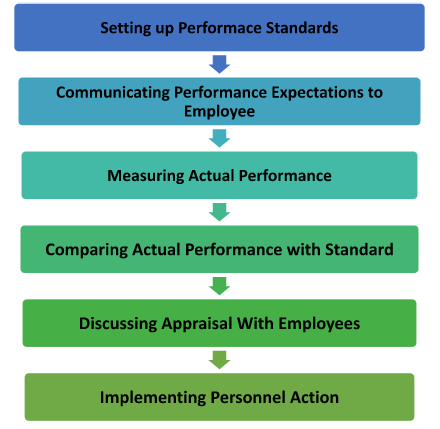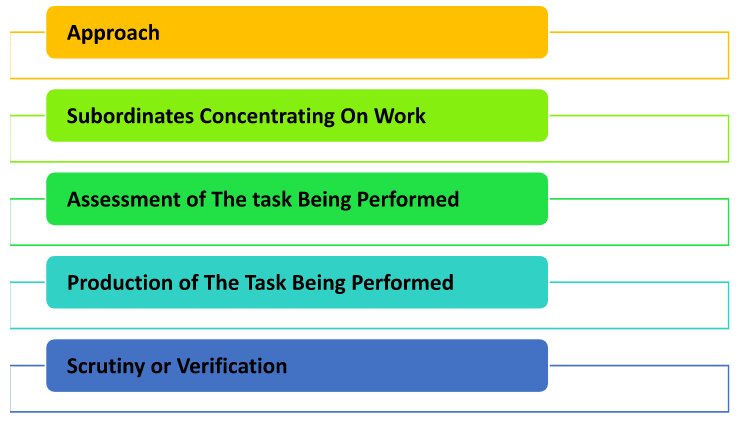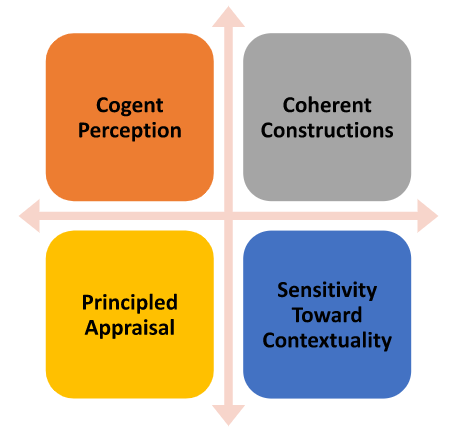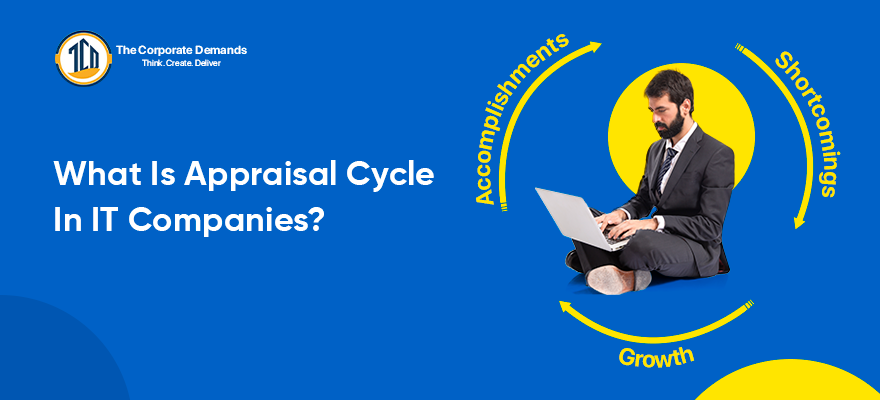Are you an IT professional who is feeling undervalued? Are you hearing negative comments about your work from your colleagues? If so, it may be time for you to reassess your appraisal cycle.
In a constantly changing business environment, how companies appraise IT professionals has become increasingly important. With teams becoming busier and the need for more efficient workflows, IT professionals can be put under a lot of pressure.
Companies use appraisal cycles to manage their workforce. The purpose of the cycle is to provide an accurate assessment of individual employees to make necessary adjustments. This determines whether employees are meeting company expectations and whether they need additional training or support.
Go through this blog to get an overall view of the appraisal cycle the steps involved, the benefits of appraisal, and of course some tips for a successful appraisal cycle.
What is an Appraisal Cycle in IT Companies?
IT companies undergo an appraisal cycle every two to three years. This cycle includes conducting an agency financial assessment, developing a business case, and finally issuing an invoice for work performed. What are the steps in this cycle? How do they help manage IT costs?
The appraisal cycle is a process that helps ensure that the value of IT services meets expectations. It helps manage IT costs by ensuring that the costs of services are reflected in the price of invoices.
In the appraisal process, work experience is crucial. It was discovered that almost 48% of employees with 1-2 years of experience anticipate raises of greater than 30%, nearly 28% anticipate increases of 20–30%, and nearly 19% anticipate increases of 10–20%.
A closer examination of the various income brackets reveals that, on average, 31% of workers in the 2-5LPA CTC range anticipate a boost of between 20 and 30%, while nearly 47% and 18% anticipate increases of between 30 and 50%, respectively. On the other hand, only 3% of people expect their self-review for appraisal to result in a raise of more than 10%.
The steps involved in the appraisal cycle are as follows:
Steps Involved in Performance Appraisal Process
Have a look at the performance appraisal process in the figure below.

1: Setting up Performance Standards
Performance benchmarks are established to guarantee the accomplishment of organisational goals and objectives, as well as departmental goals and objectives.
2: Communicating Performance Expectations to Employee
Performance standards must be communicated and accepted as expectations in order to be effective.
3: Measuring Actual Performance
It is generally simple to measure performance that is expressed in numerical terms, such as cost, quantity, quality, and timeliness. Evaluation of performance in the domain of soft skills, such as leadership, customer service, and communication, is more challenging.
4: Comparing Actual Performance with Standard
Actual performance and performance standards are compared in this stage of the appraisal process. Documentation needs to emphasise results and actions.
5: Discussing Appraisal with Employees
It can be challenging to control emotions and expectations during this point in the process, which is typically the most challenging for managers and employees alike. There may be disagreements on the best course of action even when performance is strong. A situation might become emotionally charged when there is a major difference of opinion over performance.
6: Implementing Personnel Action
The discussion and/or implementation of any additional actions, such as a reward of some kind—a raise, promotion, or highly sought-after growth opportunity—or remedial action—a performance plan or termination—is the last stage of the assessment process.
Importance of Performance Appraisal Cycle in IT Companies
The number of technology companies expanding and contracting rapidly has led to a significant change in the way businesses operate. Along with this trend, IT companies have had to adapt and change their appraisal cycles in order to keep up with the demand for talent. Appraisal cycles are important because they dictate both the length of time for which an employee is employed and their salary increases or decreases.
- Increasing employee satisfaction and engagement
- Retaining talent through development-focused criticism
- Upskilling employees to ensure career development
- Enhancing individual growth through cooperation and teamwork
- Allowing workers to voice any concerns they may have
- Identifying underperformers and setting up coaching and learning sessions as necessary
Components of an Appraisal Cycle
Appraising work performances can be a challenging task. What do you do when you have to give someone a review, rating, or critique? How do you determine the level of praise or criticism that is deserved?
There are four steps in the appraisal cycle: conduct, appraisal, decision, and communication. Each of these steps has important consequences for the evaluation process.
Each step in the appraisal cycle affects the accuracy and fairness of the evaluation. It’s important to understand how each step works in order to make accurate assessments and provide feedback that is useful for individual improvement.
Types of Appraisal Cycle
Appraisal cycles can be confusing. What does it mean when someone rates something on a 1 to 5 scale? And why is it important to understand the different appraisal cycles?
When people are assessing a situation, they go through five primary appraisal cycles: Approach, subordinates concentrating on work, assessment of the task being performed, production of the task being performed, and scrutiny or verification. It’s important to understand each one so you can make accurate decisions.

Knowing your appraisal cycle will help you make better decisions in your workplace. You will also be able to assess the performance of others accurately. For example, if you know that you tend to produce high-quality work during an Assessment Phase cycle, you will be more likely to give your subordinates feedback during this cycle.
Benefits of an Effective Appraisal Cycle
An appraisal is an important process in HRM. Many organisations rely on an appraisal to make staffing decisions, manage employee development, and evaluate performance. But how does appraisal work, and what are the benefits?
The four steps of an effective appraisal cycle are planning, conducting, evaluating, and measuring. Each step has benefits that will help you achieve your goals.
Each step of the appraisal cycle has specific benefits that can help you achieve your objectives.

1: Planning will help you create an accurate appraisal system that tracks progress and provides feedback.
2: Conducting will enable you to accurately appraise each employee, identify strengths, and provide feedback that will support growth.
3: Evaluation will provide accurate feedback that helps employees assess their own performance and identifies areas for improvement.
4: Measurement helps you track progress and determines whether or not your objectives have been met. By following these steps correctly, you can ensure that your appraisal system is effective and efficient.
Challenges of the Appraisal Cycle
How do you go about providing an accurate evaluation of someone? Often, it’s a complex process that requires thought and analysis. You need to be aware of the different aspects of the person being evaluated in order to provide a fair, accurate assessment.
The appraisal cycle is a four-step process that helps you evaluate someone. Understanding the cycle will help you make accurate judgments about that person.

The following are four challenges that you may encounter when using the appraisal cycle:
Challenge 1: Cogent perception. When you use the appraisal cycle, you need to be able to see all aspects of the person in order to make an accurate judgment. However, sometimes people hide their true feelings or intentions. This can make it difficult to form an accurate perception of them.
Challenge 2: Coherent constructions. When constructing your evaluation, keep in mind the person’s goals, values, and beliefs. This will help you form a coherent construct portrait of that person. However, often time’s people distort or omit information in order to assert their own point of view.
Challenge 3: Principled appraisals. When making your evaluation, always follow your principles and biases (if any). Doing so will help you make fair and accurate judgments about that person. However, sometimes our principles and biases cloud our judgment and lead us to make erroneous evaluations of people.
Challenge 4: Sensitivity toward contextuality and flexibility boundaries by fixed rules or generalizations about people’s character traits or dispositions
Tips for a Successful Appraisal Cycle
Here are five tips that will help you improve your performance in the workplace and get a successful appraisal:
1) Be proactive when it comes to updating your skills and knowledge. Stay current with industry changes so that you can demonstrate that you are a valuable asset to the company.
2) Don’t neglect your personal development plan. Dedicate time each week to brushing up on new technologies, studying for certification exams, or taking online courses. These activities will show that you’re committed to growth and improvement.
3) Keep track of reviews from customers and clients. Use this feedback as input into how you rate yourself against other employees in your department or organization.
4) Don’t wait for evaluation to happen spontaneously; take the initiative to have positive evaluations completed early on in the cycle so that they play a role in shaping future evaluations.
5) Represent yourself well during all stages of the appraisal process—from planning through evaluation—so that you come off as proactive and deserving of further opportunities at the company
Conclusion
IT companies undergo a regular cycle of appraisal to ensure that the company’s operations and development are in line with its strategic goals. During this appraisal process, managers will analyze the company’s performance against specified objectives and make necessary changes or adjustments to the company’s strategy. By following a regular appraisal cycle, IT companies can ensure that their operations are aligned with their long-term vision and goals.
Follow The Corporate Demands for more information.
Check Why IT Firms Revoke Offer Letters?

